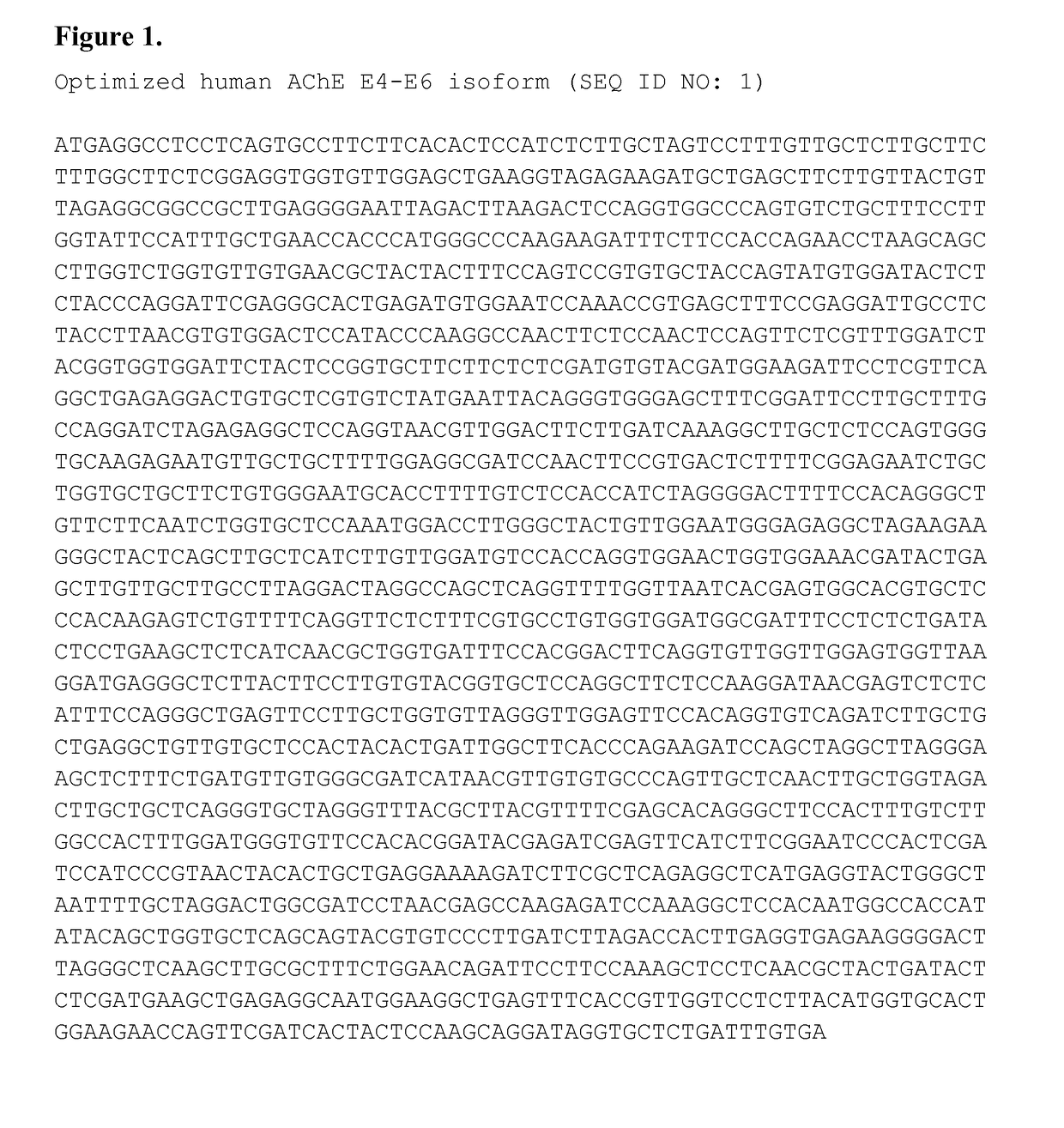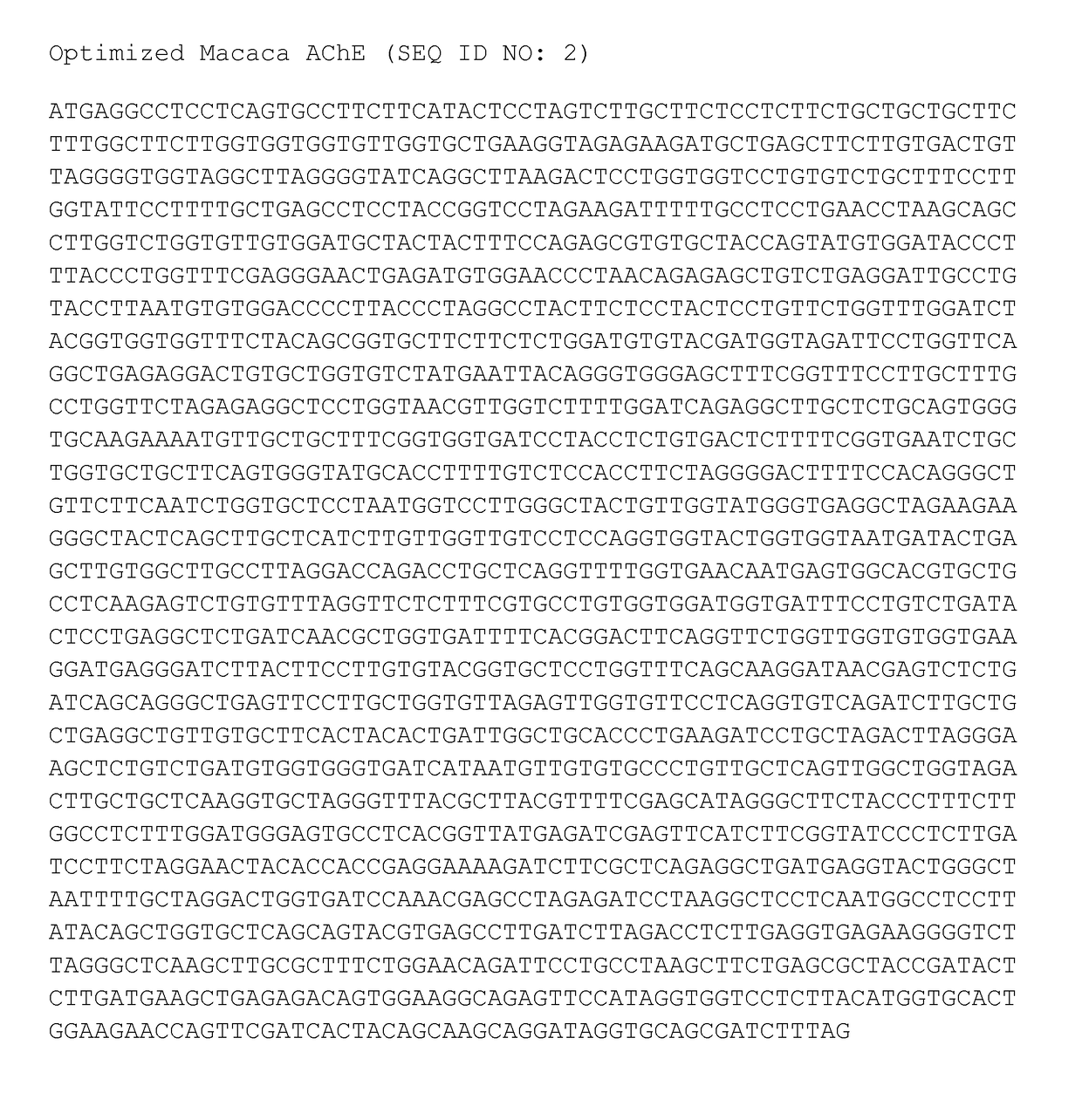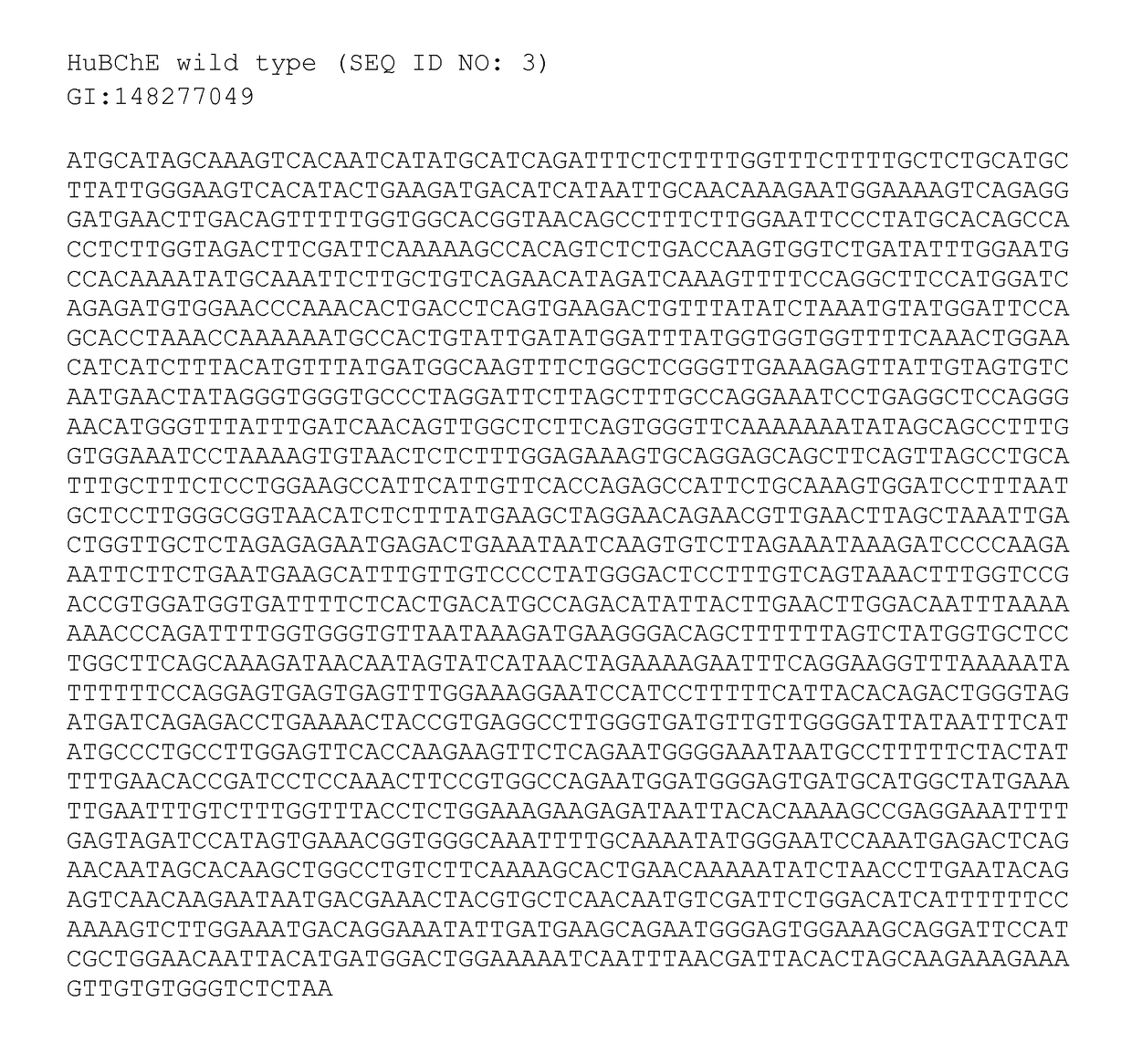Production of highly thermally stable recombinant cholinesterases for the detection, detoxification and decontamination of organophosphorus compounds
a cholinesterase and highly stable technology, applied in the direction of polypeptides with his-tags, peptide/protein ingredients, peptides/protein ingredients, etc., can solve the problems of not fully accounting for toxic effects, significant concern about the effects of long-term exposure to these chemicals, and difficulty in breathing of victims, etc., to enhance the production of thermally stable che, increase the expression and thermal stability of che proteins, and increase the expression and thermal stability of ch
- Summary
- Abstract
- Description
- Claims
- Application Information
AI Technical Summary
Benefits of technology
Problems solved by technology
Method used
Image
Examples
example 1
Production of Plant / Leaf Extract
[0090]One liter of a modified extraction buffer containing 5 mM MgCl2, 4 mM DTT, 150 mM sodium metabisulfite and 10% sucrose in PBS pH 7.4 was prepared and chilled at 4° C. before use. Chitosan was prepared (Chitosan, low molecular weight, Sigma Aldrich 448869—50 g) by adding 1% w / v chitosan into 1% acetic acid and the solution stirred for at least 30 minutes until dissolved and taking on a gelatinous looking appearance. Frozen leaves were ground in a Vitamix blender with 5×w / v extraction buffer. After grinding, the slurry was passed through Miracloth (Calbiochem #475855), poured into centrifuge bottles and centrifuged at 20,000×g for 15 minutes. After centrifugation, the supernatant was poured into a beaker, pH changed to 7.4 and chitosan added at 0.2% v / v. The extract containing chitosan was then stirred at 4° C. for 30 minutes, removed from the stirrer, and left for an additional 30 minutes at 4° C. The extract was poured into centrifuge bottles an...
example 2
Physical Properties
[0093]In vitro stability of the human ChE preparations at different storage temperatures was examined Aliquots of the purified human AChE preparations in liquid form (1 in 50 mM sodium phosphate, pH 8.0+10% glycol+1 mM EDTA) were stored at 4° C., 25° C. and 37° C.; aliquots were removed at various time intervals over 21 days and assayed for AChE activity using the Ellman assay known in the art. The activity of human AChE preparations were found to be stable 4° C., 25° C., 37° C. for at least 14 days and still >70% functional after 21 days as shown in FIG. 4.
[0094]Pesticide Inhibition Profiles were assessed to demonstrate AChE produced in Nicotiana plants displayed similar inhibition profiles to current sources of human AChE by a panel of cholinesterase OP inhibitors. AChE-containing plant extracts and purified plant AChE were diluted to rate of 250-300 mOD / min in Ellman assay, incubated 10 minutes with various inhibitors ranging from 100 pM to 1 mM in isopropanol ...
PUM
| Property | Measurement | Unit |
|---|---|---|
| Temperature | aaaaa | aaaaa |
| Temperature | aaaaa | aaaaa |
| Temperature | aaaaa | aaaaa |
Abstract
Description
Claims
Application Information
 Login to View More
Login to View More - R&D
- Intellectual Property
- Life Sciences
- Materials
- Tech Scout
- Unparalleled Data Quality
- Higher Quality Content
- 60% Fewer Hallucinations
Browse by: Latest US Patents, China's latest patents, Technical Efficacy Thesaurus, Application Domain, Technology Topic, Popular Technical Reports.
© 2025 PatSnap. All rights reserved.Legal|Privacy policy|Modern Slavery Act Transparency Statement|Sitemap|About US| Contact US: help@patsnap.com



